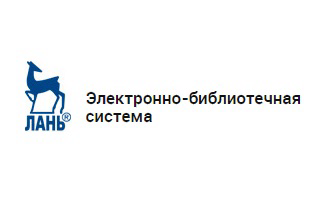DOI: 10.21440/0536-1028-2019-6-90-97
Shaikhova D. R. Prospects for bioleaching of metal from wastes with Acidithiobacillus ferrooxidans. Izvestiya vysshikh uchebnykh zavedenii. Gornyi zhurnal = News of the Higher Institutions. Mining Journal. 2019; 6: 90–97 (In Russ.). DOI: 10.21440/0536-1028-2019-6-90-97
Introduction. The decline in the quality of mineral raw materials and the problems of ecological safety
actualize the development of biological leaching technology, where Acidithiobacillus ferrooxidans is a key
microorganism.
Methodology includes the analysis of the biotechnologies of low-grade and complex minerals processing.
Biological characteristics of Acidithiobacillus ferrooxidans. This microorganism is a gram-negative,
chemoautotrophic, acidophilic aerobic that grows at 1.0-4.5 pH and a wide range of temperatures.
A. ferrooxidans is an object of many studies, so magnetosomes have recently been discovered, and 8 strains
have been completely sequenced. A. ferrooxidans uses Fe2+ and S 0 as electron donors, and O 2, S 0 or Fe3+
as electron acceptors.
Mechanisms and technologies of bioleaching. Possible mechanisms for bioleaching of sulphide ores are
of great interest for research, since at the moment there are three equivalent theories: contact, non-contact and
cooperative mechanisms. Commercially there are heap, underground (in situ) and tank bacterial leaching.
Perspective directions. One of the promising areas of research is the potential use of A. ferrooxidans for
the processing of metals from household waste. The resistance of strains to heavy metals, the problems
of environmental safety in the extraction and processing of mineral raw materials, etc. are also being
studied. Guidelines for conducting molecular genetic studies were also published.
Conclusion. The use of biogeotechnologies will allow to engage low-grade and complex mineral resources
in processing, to increase the effectiveness of useful components extraction, as well as to ensure
environmental protection.
Key words: bioleaching; Acidithiobacillus ferrooxidans; microorganisms; hydrometallurgy;
biotechnologies.
REFERENCES
1. Iagafarova G. G., Kutliakhmetov A. N., Safarova V. I., Kubareva S. Iu. The role of thionic bacteria
(acidithiobacillus ferrooxidans) in metals leaching from rock dumps on Uchalinsky mining and processing
integrated works. Georesursy = Georesourses. 2012; 6 (48): 84–87. (In Russ.)
2. Yan L., Yin H. H., Zhang S. A., Leng F. F., Nan W. B., Li H. Y. Biosorption of inorganic and organic
arsenic from aqueous solution by Acidithiobacillus ferrooxidans BY-3. J. Hazard Mater. 2010;
178(1–3): 209–217.
3. Zhang S., Yan L., Xing W., Chen P., Zhang Y., Wang W. Acidithiobacillus ferrooxidans and its potential
application. Extremophiles. 2018; 22: 563–580.
4. Valdés J. Pedroso I., Quatrini R., Dodson R.J., Tettelin H., Blake R., Eisen J. A., Holmes D. S.
Acidithiobacillus ferrooxidans metabolism: from genome sequence to industrial application. BMC Genom.
2008; 9(1): 597–620.
5. Hedrich S., Schlömann M., Johnson D. B. The iron-oxidizing proteobacteria. Microbiology. 2011;
157(6): 1551–1564.
6. Schrader J. A., Holmes D. S. Phenotypic switching of Thiobacillus ferrooxidans. J. Bacteriol. 1988;
170(9): 3915–3923.
7. Yan L., Zhang S., Chen P., Wang W., Wang Y., Li H. Magnetic properties of Acidithiobacillus
ferrooxidans. Mater. Sci. Eng. 2013; 33(7): 4026–4031.
8. Yan L., Yue X., Zhang S., Chen P., Xu Z., Li Y., Li H. Biocompatibility evaluation of magnetosomes
formed by Acidithiobacillus ferrooxidans. Mater. Sci. Eng. 2012; 32(7): 1802–1807.
9. Ulloa R., Moya-Beltrán A., Issotta F., Nuñez H., Covarrubias P. C., Donati E. R., Quatrini R., Giaveno
A. Metagenome-derived draft genome sequence of Acidithiobacillus ferrooxidans RV1 from an abandoned
gold tailing in Neuquén, Argentina. Solid State Phenom. 2017; 262: 339–442.
10. Osorio H., Mangold S., Denis Y., Ñancucheo I., Esparza M., Johnson D. B., Bonnefoy V., Dopson M.,
Holmes D. S. Anaerobic sulfur metabolism coupled to dissimilatory iron reduction in the extremophile
Acidithiobacillus ferrooxidans // Appl. Environ. Microbiol. 2013; 79(7); 2172–2181.
11. Ishii T., Kawaichi S., Nakagawa H., Hashimoto K., Nakamura R. From chemolithoautotrophs to
electrolithoautotrophs: CO2 fixation by Fe(II)-oxidizing bacteria coupled with direct uptake of electrons
from solid electron sources. Front Microbiol. 2015; 6: 994–1003.
12. Sugio T., Hirayama K., Inagaki K., Tanaka H., Tano T. Molybdenum oxidation by Thiobacillus
ferrooxidans. Appl. Environ. Microbiol. 1992; 58(5): 1768–1771.
13. Temple K. L., Colmer A. R. The autotrophic oxidation of iron by a new bacterium, Thiobacillus
ferrooxidans. J. Bacteriol. 1951; 62(5): 605–611.
14. Brierley C. L. How will biomining be applied in future? T. Nonferr. Metal. Soc. 2008;
18(6): 1302–1310.
15. Mahmoud A., Cézac P., Hoadley A. F. A., Contamine F., D’Hugues P. A review of sulfide minerals
microbially assisted leaching in stirred tank reactors. Int. Biodeterior Biodegrad. 2017; 19: 118–146.
16. Dong Y., Lin H., Xu X., Zhou S. Bioleaching of different copper sulfides by Acidithiobacillus
ferrooxidans and its adsorption on minerals. Hydrometallurgy. 2013; 140: 42–47.
17. Tipre D. R., Dave S. R. Bioleaching process for Cu–Pb–Zn bulk concentrate at high pulp density.
Hydrometallurgy. 2014; 75(1): 37–43.
18. Tipre D. R., Vora S. B., Dave S. R. Medium optimization for bioleaching of metals from Indian bulk
polymetallic concentrate. Indian J. Biotechnol. 2004; 3: 86–91.
19. Watling H. R. The bioleaching of nickel-copper sulfides. Hydrometallurgy. 2008; 91(1–4): 70–88.
20. Muñoz J. A., Ballester A., González F., Blázquez M. L. A study of the bioleaching of a Spanish uranium
ore. Part II: orbital shaker experiments. Hydrometallurgy. 1995; 38(1): 59–78.
21. Qiu G., Li Q., Yu R., Sun Z., Liu Y., Chen M., Yin H., Zhang Y., Liang Y., Xu L. Column bioleaching
of uranium embedded in granite porphyry by a mesophilic acidophilic consortium. Bioresour Technol.
2011; 102(7): 4697–4702.
22. Teliakov N. M., Dariin A. A., Luganov V. A. Prospects of biotechnologies application in metallurgy and
enrichment. Zapiski Gornogo instituta = Journal of Mining Institute. 2016; 217: 113–124. (In Russ.)
23. Gentina J. C., Acevedo F. Microbial ore leaching in developing countries. Trends in Biotechnology.
1985; 3 (4): 86–89.
24. Khomchenkova A. S. Study of effects of various concentration salts of heavy metals on growth
acidophilic chemolithotrophic microorganisms crop. Gornyi informatsionno-analiticheskii biulleten
(nauchno-tekhnicheskii zhurnal) = Mining Informational and Analytical Bulletin (scientific and technical
journal). 2016; S31: 217–222. (In Russ.)
25. Khainasova T. S., Levenets O. O., Trukhin Iu. P. The use of microorganisms immobilization in
bioleaching. Gornyi informatsionno-analiticheskii biulleten (nauchno-tekhnicheskii zhurnal) = Mining
Informational and Analytical Bulletin (scientific and technical journal). 2016; S31: 235–246. (In Russ.)
26. Rogatykh S. V., Muradov S. V. Guidelines for carrying out molecular biological analysis of native
microbial associations copper-nickel deposits. Gornyi informatsionno-analiticheskii biulleten (nauchnotekhnicheskii
zhurnal) = Mining Informational and Analytical Bulletin (scientific and technical journal).
2016; S31: 195–204. (In Russ.)
Received 7 May 2019









